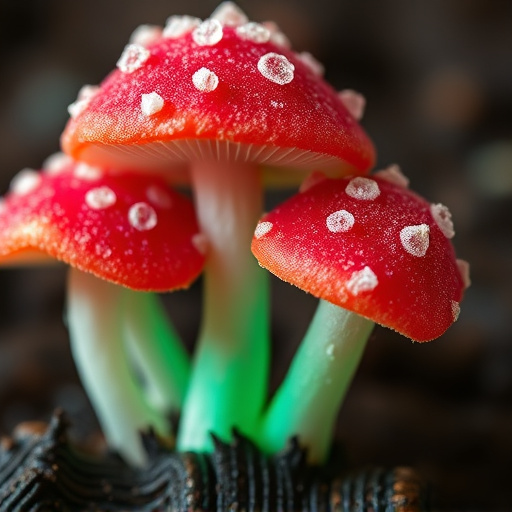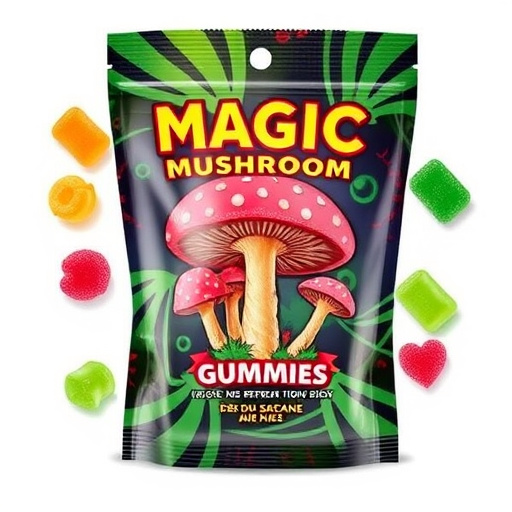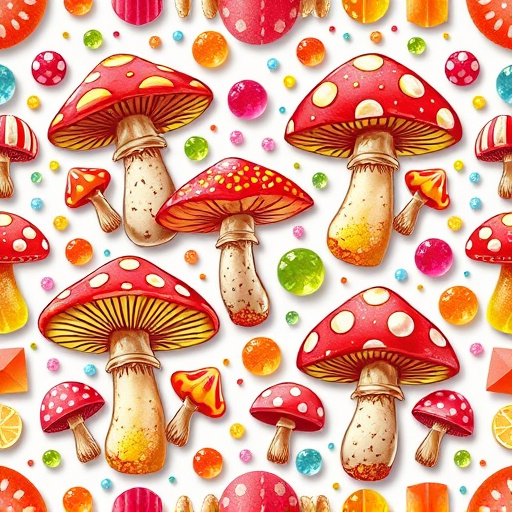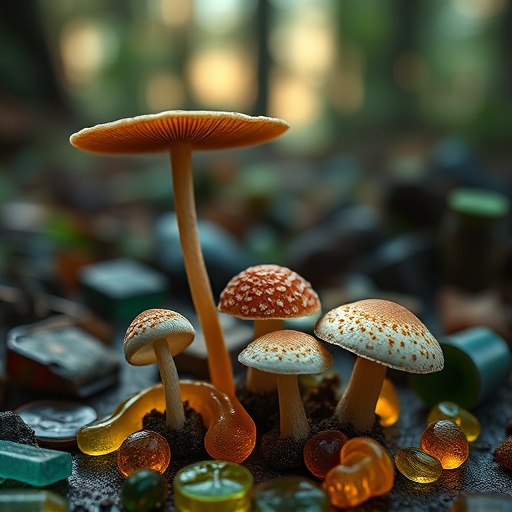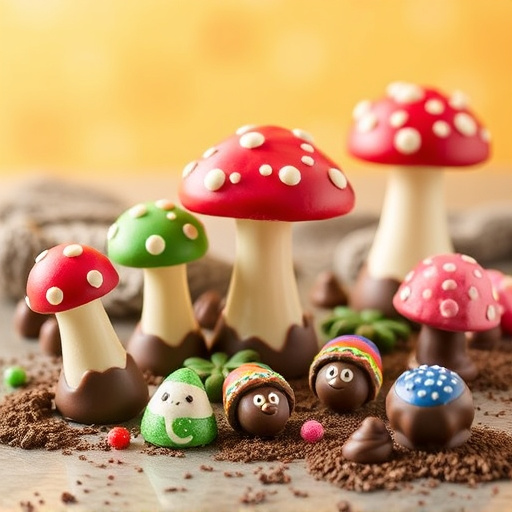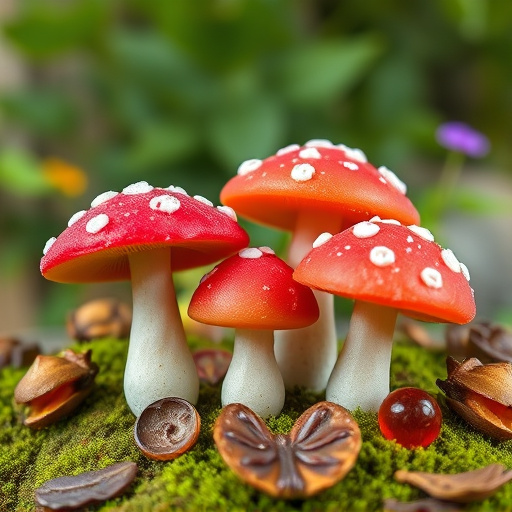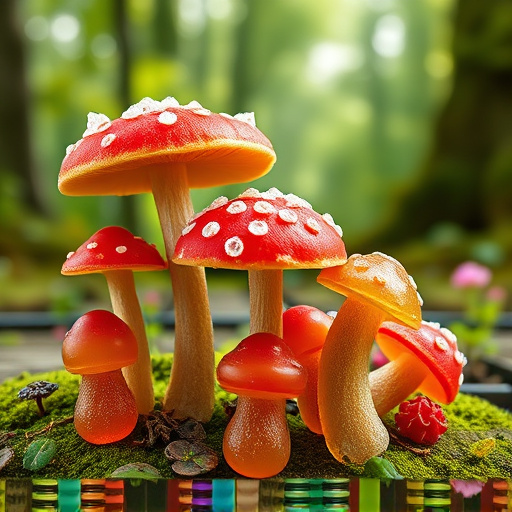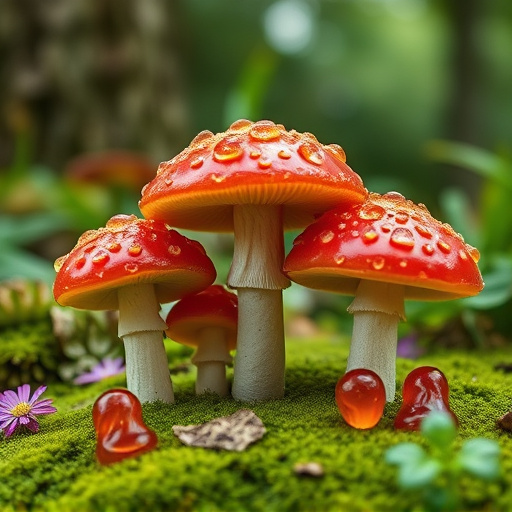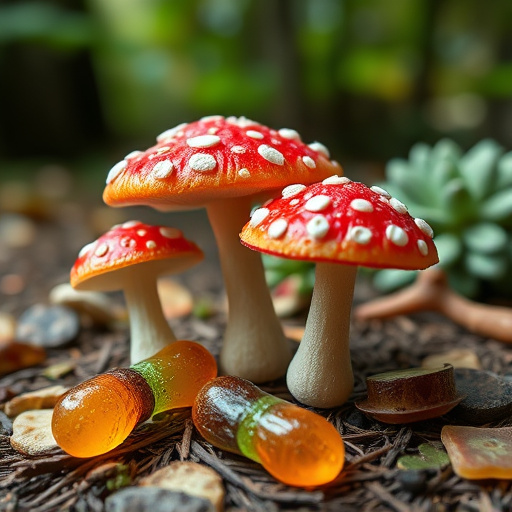"The Science Behind Magic Mushroom Gummies reveals how these innovative treats harness psilocybin, a natural compound found in specific mushrooms. By extracting and incorporating it into gummies, consumers can experience psychedelic effects in a controlled manner. Psilocybin stimulates creativity and alters perception by converting to psilocin, which interacts with brain serotonin receptors. Research highlights its potential therapeutic uses for depression, anxiety, PTSD, and addiction, while modern production methods ensure precise dosing through gummy formats."
Discover the fascinating world of Magic Mushroom Gummies – a revolutionary blend of traditional psychedelics and modern confectionery. In this article, we explore the science behind magic mushroom gummies, delving into their active compounds, primarily psilocybin, and its profound effects on the mind. We’ll navigate their production process, discuss safe consumption methods, and uncover potential therapeutic benefits backed by emerging research.
- What Are Magic Mushroom Gummies?
- The Active Compounds: Psilocybin and Its Effects
- Production, Consumption, and Potential Benefits
What Are Magic Mushroom Gummies?
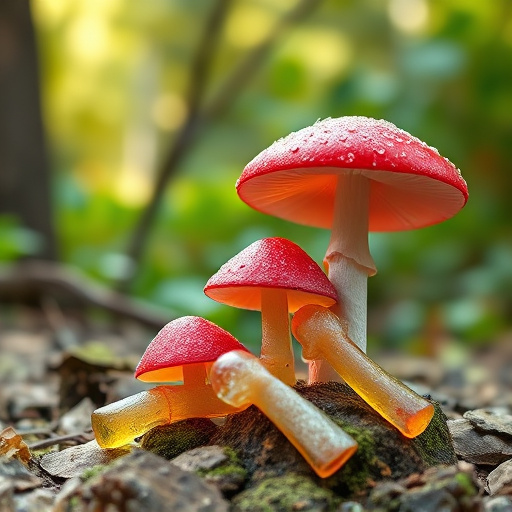
Magic mushroom gummies are edible treats infused with psilocybin, a compound naturally found in certain types of mushrooms. These gummies combine the traditional use of psychedelic mushrooms with modern technology, offering a convenient and potentially therapeutic way to experience their effects. The Science Behind Magic Mushroom Gummies involves extracting psilocybin from specific mushroom species, which is then processed and incorporated into gummy bears or other confectionery forms. Unlike traditional methods of consuming psychedelic mushrooms, gummies provide a precise dose, making it easier to control the intensity of the experience.
The active compound, psilocybin, is known for its ability to alter perception and stimulate creative thinking. When consumed, it converts into psilocin in the body, which interacts with serotonin receptors in the brain. This interaction can lead to heightened senses, visual hallucinations, and profound emotional experiences. Magic mushroom gummies are gaining attention not only for their recreational appeal but also for their potential therapeutic benefits, as research suggests they may aid in treating conditions like depression, anxiety, and addiction.
The Active Compounds: Psilocybin and Its Effects
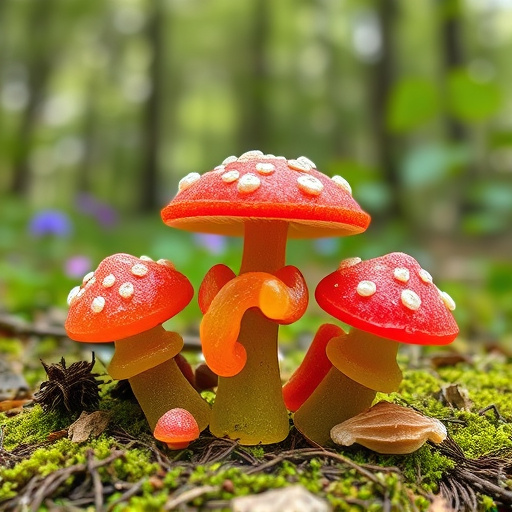
Magic mushroom gummies are an innovative way to experience the active compounds found in psychedelic mushrooms, primarily psilocybin. The science behind these gummies lies in harnessing the natural chemicals within certain fungi, which have been used for centuries by indigenous cultures for their medicinal and spiritual properties. Psilocybin, the primary active compound, is a potent psychoactive substance that interacts with our brain’s serotonin receptors. This interaction leads to altered perceptions, heightened creativity, and profound insights—effects often sought after in therapeutic settings.
When psilocybin enters the body, it undergoes metabolism, transforming into psilocin, another powerful compound. This process kicks off a cascade of neurochemical reactions, affecting various aspects of brain function. Research suggests that psilocybin can induce mystical experiences, enhance emotional processing, and promote cognitive flexibility. Users often report feeling an increased sense of connectedness with nature, art, or even themselves, leading to profound personal insights and transformations. The science behind magic mushroom gummies is evolving, uncovering potential therapeutic applications for conditions like depression, anxiety, and post-traumatic stress disorder (PTSD).
Production, Consumption, and Potential Benefits
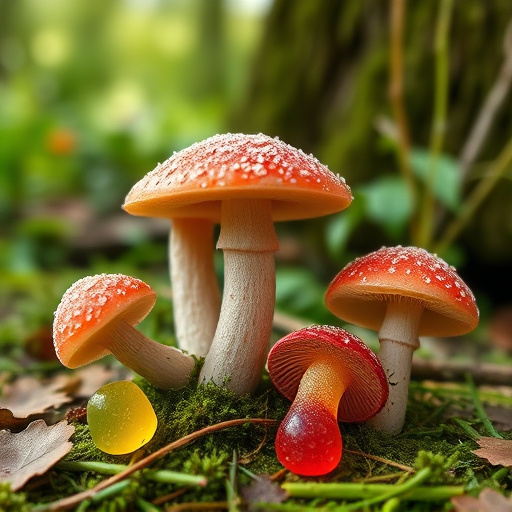
Magic mushroom gummies are a modern twist on traditional psychedelic substances, combining the active compounds found in magic mushrooms with the familiar and convenient form of gummies. The production process involves extracting psilocybin, the primary psychoactive compound in magic mushrooms, and infusing it into a gummy base made from ingredients like sugar, gelatin, and flavorings. This method offers a precise dose control, making them easier to consume compared to loose mushroom powder or dried spores.
Consumption typically involves orally ingesting a set number of gummies, with effects usually beginning within 30 minutes to an hour. Users often report enhanced creativity, spiritual insights, and altered perceptions of time and space. The potential benefits of magic mushroom gummies are being explored in therapeutic settings for their promise in treating depression, anxiety, PTSD, and addiction, with studies suggesting they may offer a safer and more accessible approach to psychedelic-assisted therapy. The science behind these gummies lies in understanding the intricate chemistry of psilocybin and its interaction with the brain’s serotonin receptors, leading to profound changes in consciousness and subjective experience.
The science behind magic mushroom gummies revolves around the active compounds psilocybin and its psychedelic effects. Despite their controversial nature, these gummies offer potential therapeutic benefits, including improved mental health and increased creativity. As production methods continue to advance, consumers can access these products more safely and responsibly. However, it’s crucial to approach them with caution and under professional guidance due to their powerful psychological impact. The growing interest in magic mushroom gummies signifies a shift towards exploring alternative treatments, highlighting the need for further research to unlock their full potential.


